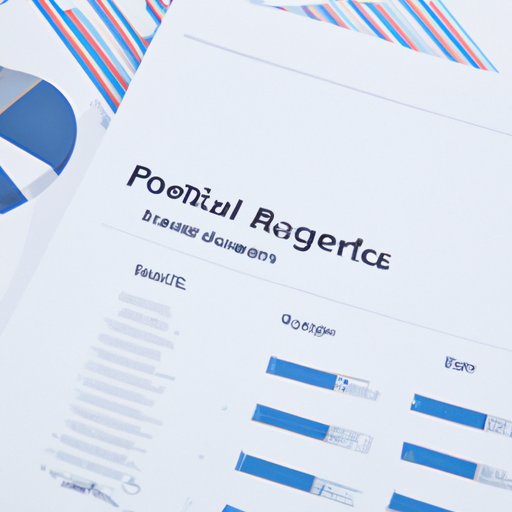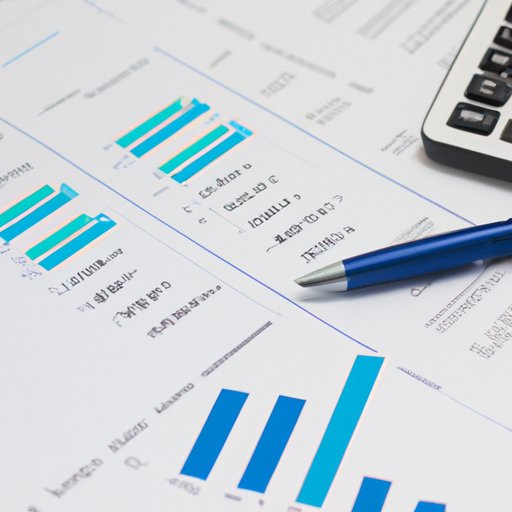Introduction
Financial report analysis is the process of examining a company’s financial reports in order to understand its financial health. It involves analyzing the company’s income statement, balance sheet, and cash flow statement in order to assess its financial performance and identify potential areas of concern. This analysis can be used by investors, creditors, and other stakeholders to make decisions about whether or not to invest in the company.
Gather Necessary Data and Documents
The first step in financial report analysis is to gather the necessary data and documents. This includes the company’s financial statements, such as the income statement, balance sheet, and cash flow statement. It also includes any other relevant documents, such as notes to the financial statements and management’s discussion and analysis. These documents should be obtained from the company’s website or from the Securities and Exchange Commission (SEC).
Examine the Income Statement
The income statement is the primary source of financial information for financial report analysis. It provides an overview of the company’s revenues and expenses over a period of time. In order to analyze the income statement, it is important to understand the different components of the statement. The components include revenues, cost of goods sold, gross profit, operating expenses, net income, and earnings per share.
Revenues are the total amount of money earned by the company during the period. Cost of goods sold is the amount of money spent to produce the goods or services sold by the company. Gross profit is the difference between revenues and cost of goods sold. Operating expenses are the costs associated with running the business, such as salaries, rent, and utilities. Net income is the difference between revenues and all expenses and is often referred to as the “bottom line.” Earnings per share is the amount of net income divided by the number of outstanding shares of stock.
Analyze the Balance Sheet
The balance sheet provides an overview of the company’s assets, liabilities, and equity. Assets are resources owned by the company that have value, such as cash, inventory, and property. Liabilities are debts owed by the company, such as loans and accounts payable. Equity is the difference between assets and liabilities and is often referred to as the “net worth” of the company.
In order to analyze the balance sheet, it is important to understand the different components of the statement. The components include current assets, non-current assets, current liabilities, non-current liabilities, and equity. Current assets are resources that can be easily converted into cash, such as cash and accounts receivable. Non-current assets are resources that will take longer to convert into cash, such as long-term investments and property. Current liabilities are debts that are due within the next 12 months, such as accounts payable and short-term loans. Non-current liabilities are debts that are not due within the next 12 months, such as long-term loans and bonds payable. Equity is the difference between assets and liabilities.
Review Cash Flow Statements
The cash flow statement provides an overview of the company’s cash inflows and outflows over a period of time. It is divided into three sections: cash flow from operating activities, cash flow from investing activities, and cash flow from financing activities. Cash flow from operating activities includes cash generated from the company’s day-to-day operations, such as sales and purchases. Cash flow from investing activities includes cash generated from investments, such as the purchase and sale of securities. Cash flow from financing activities includes cash generated from loans, such as the issuance and repayment of debt.
In order to analyze the cash flow statement, it is important to understand the different components of the statement. The components include cash receipts, cash payments, net cash flow, and cash balance. Cash receipts are the total amount of money received by the company during the period. Cash payments are the total amount of money paid by the company during the period. Net cash flow is the difference between cash receipts and payments. Cash balance is the total amount of cash on hand at the end of the period.
Assess Ratios and Trends
Ratios are mathematical calculations that compare two or more items on the financial statements. They provide insight into the company’s financial performance and can help identify potential areas of concern. Common ratios used in financial report analysis include the debt-to-equity ratio, the current ratio, and the return on equity ratio.
In addition to ratios, it is important to look for trends in the financial statements. Trends can indicate whether the company is improving or worsening over time. For example, if the company’s net income has been steadily increasing over the past few years, this may indicate that the company’s financial performance is improving. On the other hand, if the company’s net income has been steadily decreasing over the past few years, this may indicate that the company’s financial performance is deteriorating.

Present Results of Financial Report Analysis
Once the analysis is complete, it is important to present the results in a clear and concise manner. This can be done by preparing a written report that outlines the findings of the analysis. The report should include an executive summary, an analysis of each financial statement, an assessment of ratios and trends, and any conclusions or recommendations. Once the report is complete, it should be shared with the appropriate parties, such as investors, creditors, and other stakeholders.
Conclusion
Financial report analysis is an important tool for understanding a company’s financial health. It involves examining the company’s income statement, balance sheet, and cash flow statement in order to assess its financial performance and identify potential areas of concern. Additionally, it involves assessing ratios and trends in order to gain further insight into the company’s financial condition. Once the analysis is complete, the results should be presented in a written report and shared with the appropriate parties.
(Note: Is this article not meeting your expectations? Do you have knowledge or insights to share? Unlock new opportunities and expand your reach by joining our authors team. Click Registration to join us and share your expertise with our readers.)
